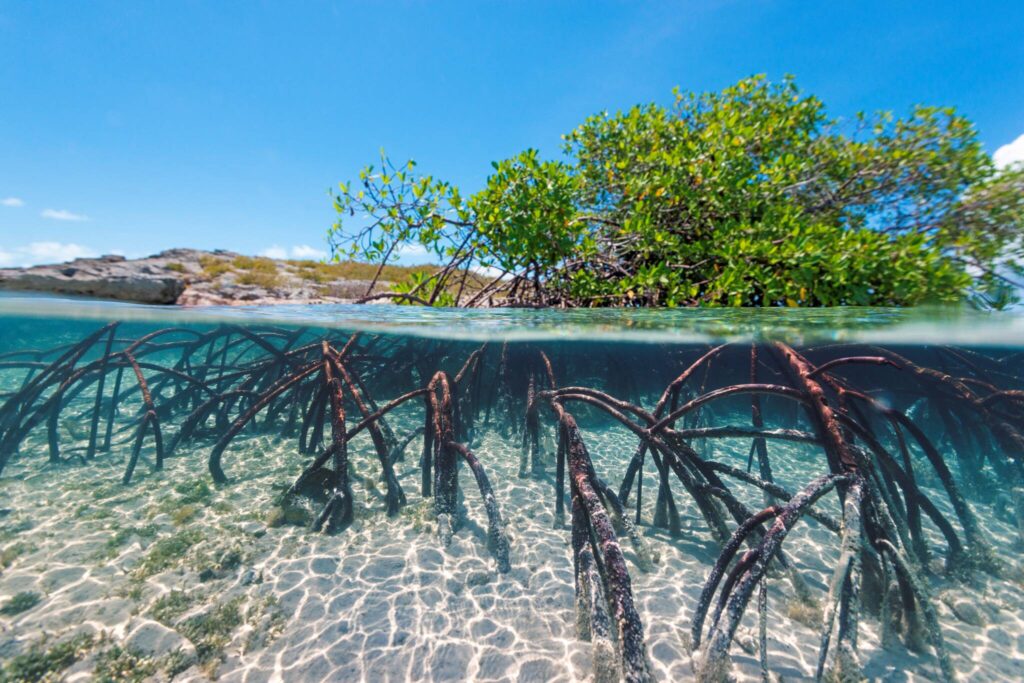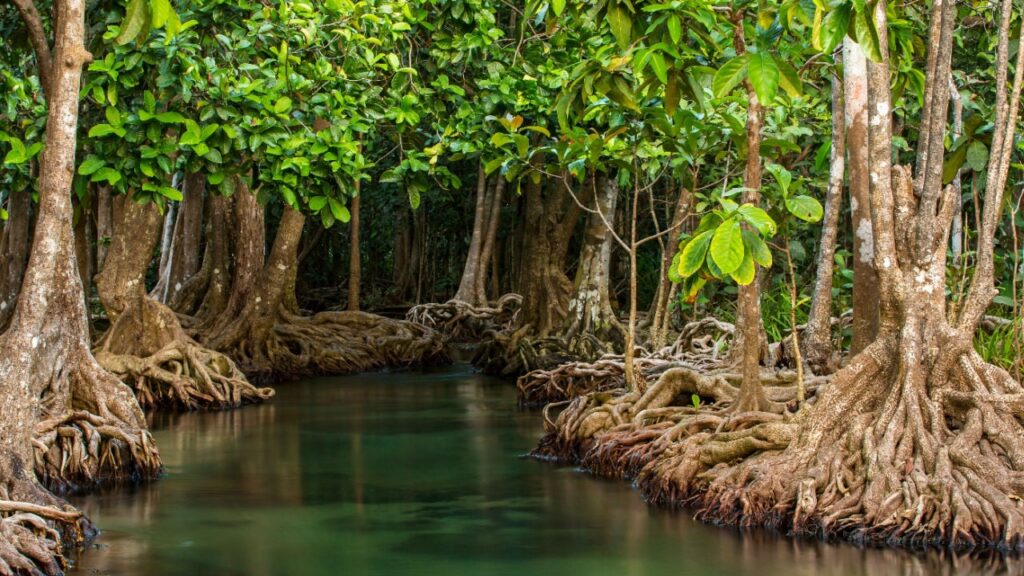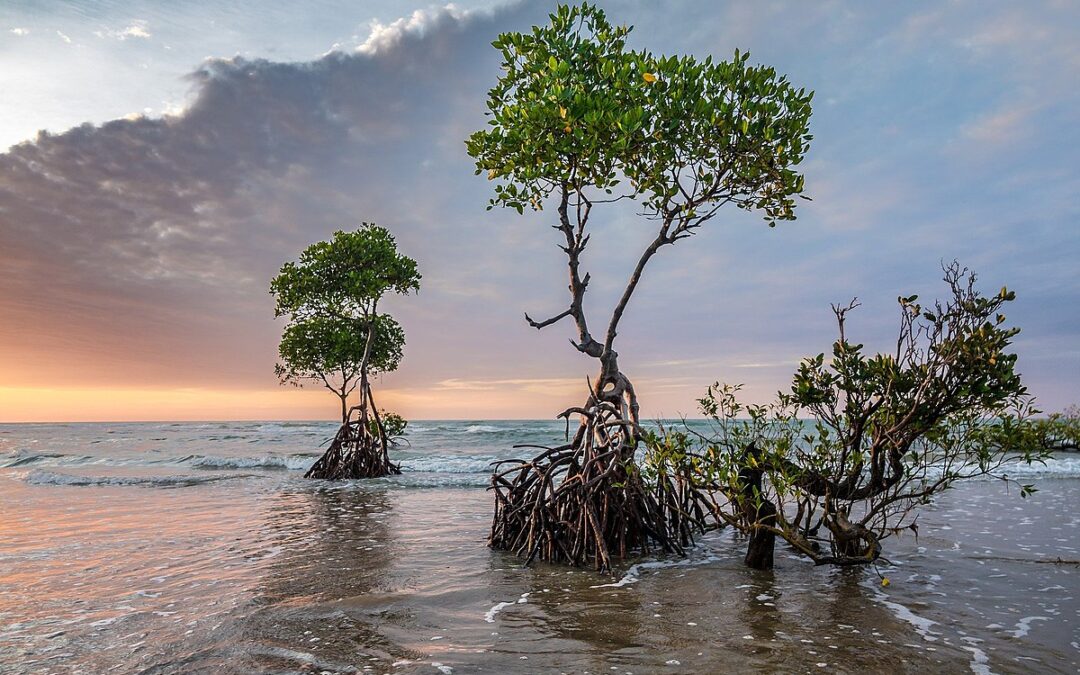The 26th of July is Mangroves Conservation Day! What are they, and why do we need to conserve the Mangroves?
Mangroves are trees or shrubs that grow in coastal saline or brackish water in the tropics or subtropics. They have special adaptations to survive in harsh conditions, such as salt filtration, oxygen uptake, and wave resistance. They are important for coastal ecosystems as they protect shorelines, filter pollutants, trap sediments, and store carbon.
Mangroves are extremely important to the coastal ecosystems they inhabit. Physically, they serve as a buffer between marine and terrestrial communities and protect shorelines from damaging winds, waves, and floods this shows mangrove’s role in fighting rising sea levels as one of the climate change effects. Mangrove thickets improve water quality by filtering pollutants and trapping sediments from the land.

Mangroves are important to people because they help stabilize the coastline ecosystem and reduce erosion. Mangroves provide natural infrastructure to help protect nearby populated areas by reducing erosion and absorbing storm surge impacts during extreme weather events such as hurricanes. They are also important to the ecosystem too. They are home to at least 1,300 species of animal.

Indonesia is the country with the most mangroves in the world with 31,000 square kilometers, which is 23% of all mangroves on the planet. Those areas can store 31 billion tons of carbon produced by approximately 2.5 billion vehicles annually. Indonesia has the largest biodiversity of mangrove species, which is 92 true mangrove species and home to varieties of organisms. Even though our Mangroves are very rich in biodiversity, but it is now threatened. The mangrove area is degraded annually, the main cause is the conversion of mangrove areas into aquaculture ponds, such as shrimp ponds, and also conversion to palm oil plantations and coastal development for urban enlargement. The plastic problem is also very concerning. The mangrove area is often being one of the waste storing places. With their unique shape of trunk and roots, many kinds of inorganic waste especially plastic are often stuck in the mangrove area. The Plastic waste can cause physical and chemical obstruction to the mangroves and the organism living in the ecosystem. Therefore, it is crucial for us to implement the ZeroWaste principle into our lives to minimize the plastic waste going into the ocean.
All images are subject to copyright to their respective owners and not owned by ZeroWaste Center by R.O.L.E. Foundation.


Recent Comments